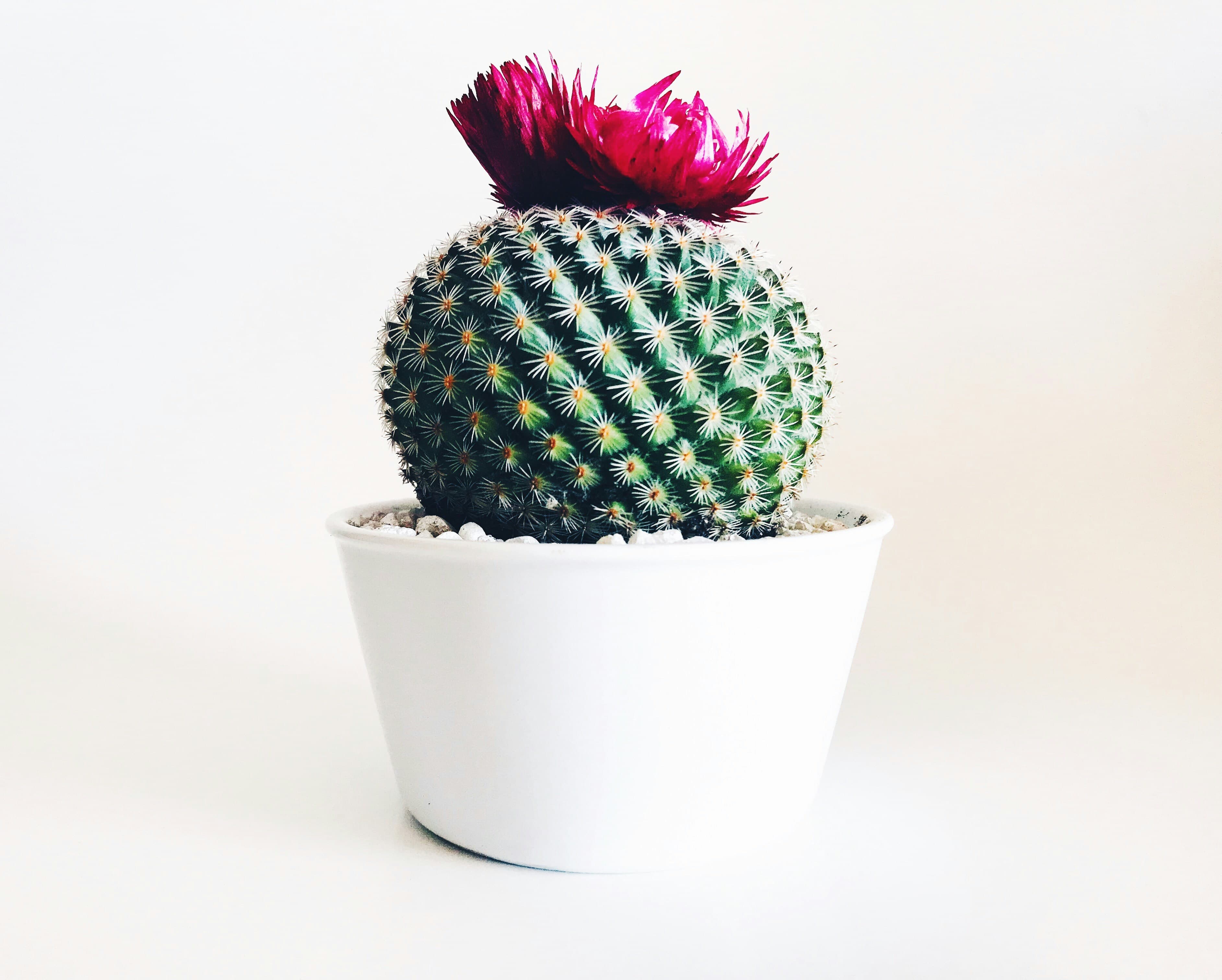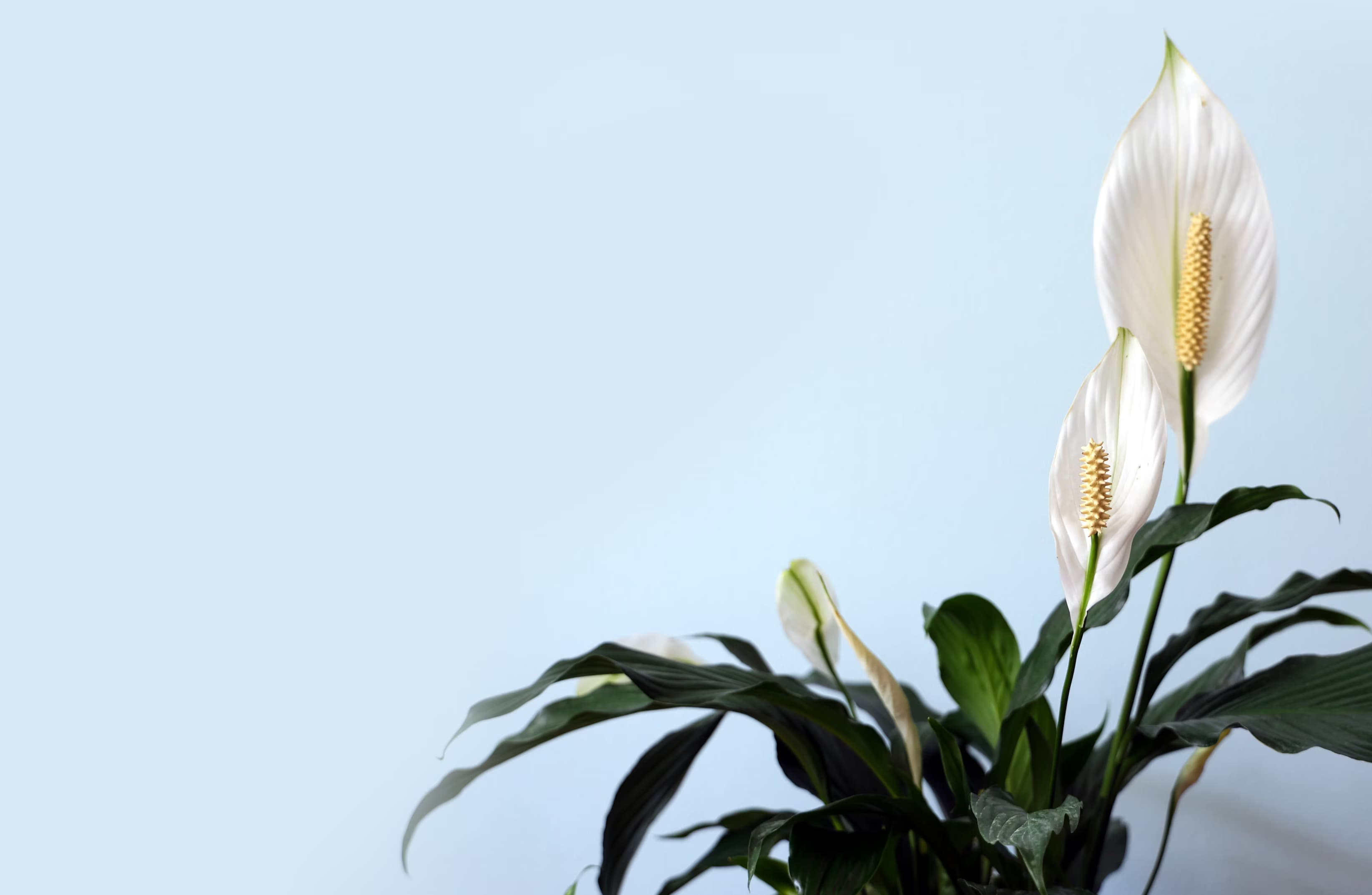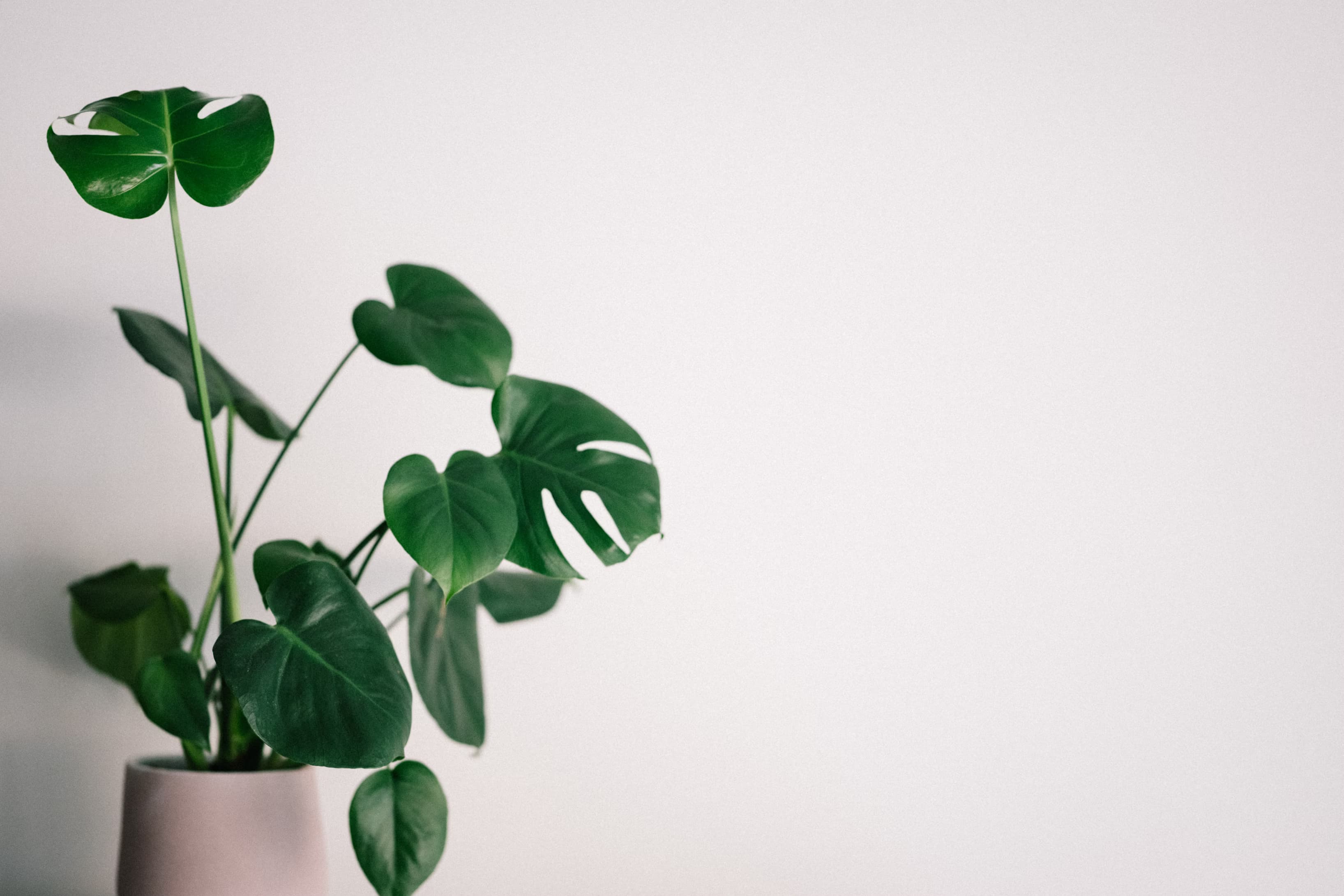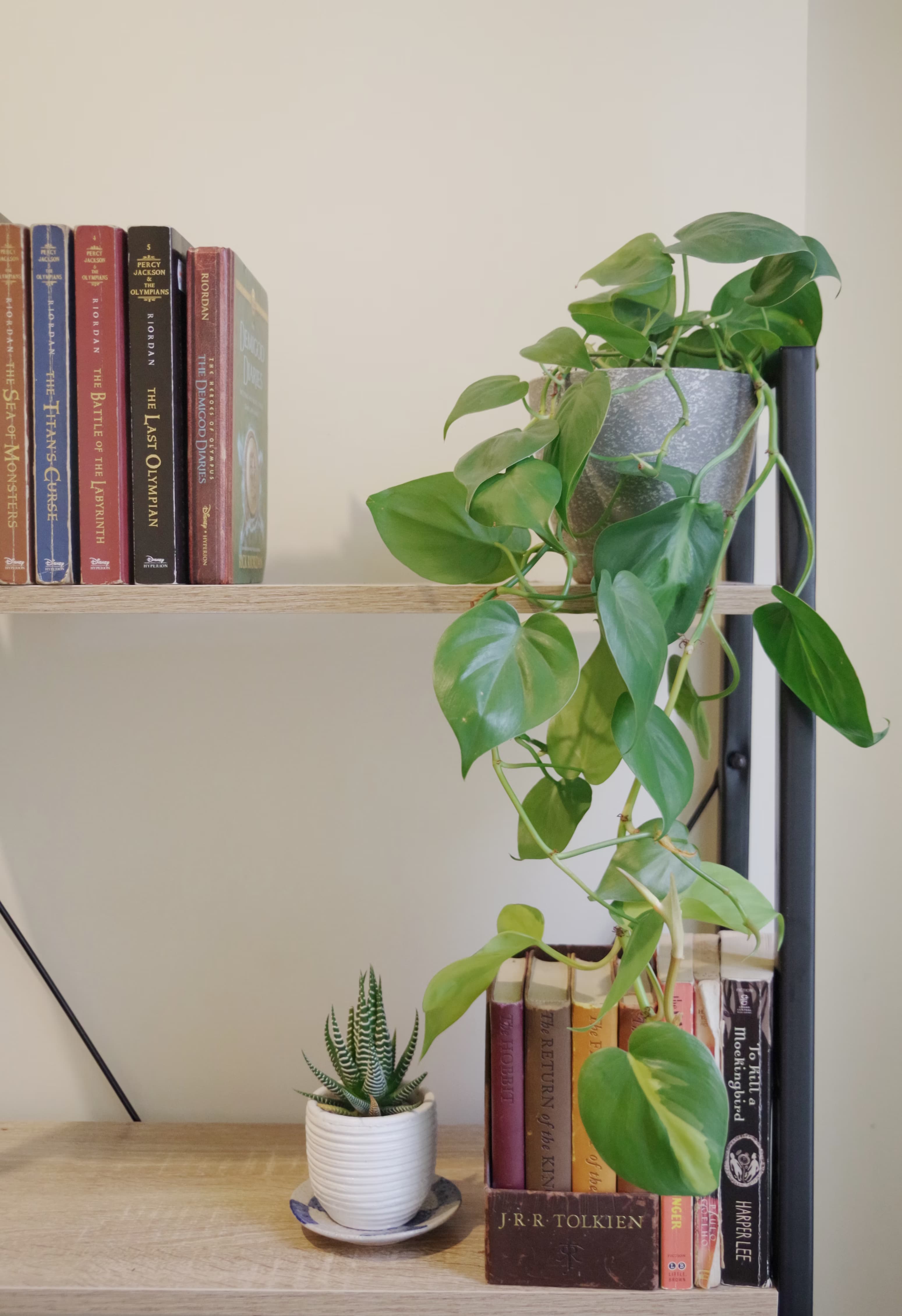
Trailing Plants Plants Care Guide
Plants with vines or trailing growth habit
Featured Trailing Plants
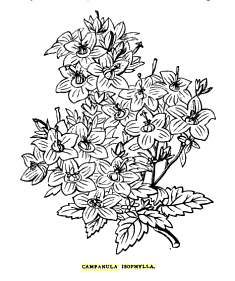
Campanula isophylla
Campanula isophylla is a trailing perennial plant with heart-shaped, toothed, light green leaves and cascading green stems that tumble over pot edges. It produces abundant star-shaped flowers measuring 3.5 cm (1.4 in) across in blue, white, or mauve colors, blooming from late summer through autumn. Growing 6-8 inches (15-20 cm) tall and 12 inches (30 cm) wide, this species is notable for its long flowering period and historical cultivation, with records dating back to 1874 documenting its freely germinating seeds. Distinct from similar species like Campanula mollis by leaf shape, it has been prized for generations as a container plant.
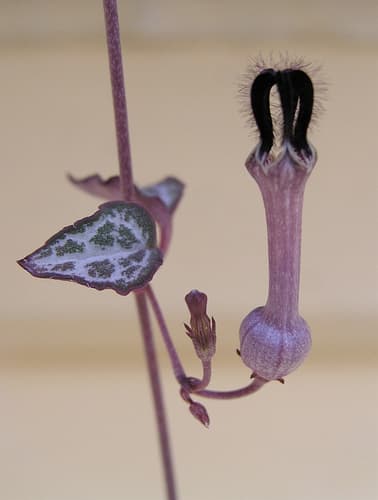
Ceropegia woodii
Ceropegia woodii is an evergreen succulent trailing vine with heart-shaped leaves measuring 1-2 cm in length and width. It grows to 10 cm in height but spreads extensively, reaching 2-4 meters in length, developing a woody caudex at its base as it matures. The plant features distinctive tuber formations at stem nodes and roots, giving it a bead-like appearance. Its flowers are tubular with a unique corolla structure (3 cm long) blending off-white and pale magenta colors, with five deeper purple petals.
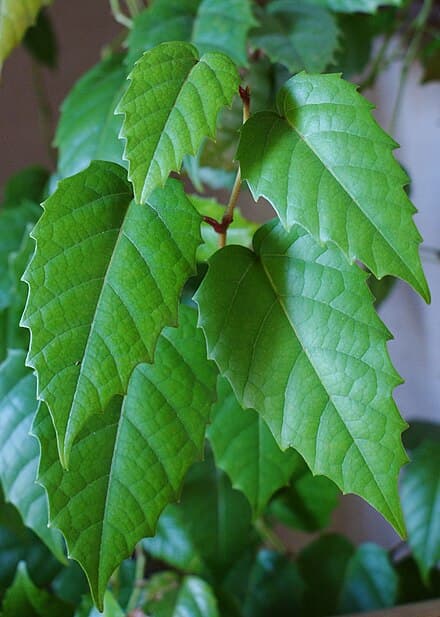
Cissus antarctica
Cissus antarctica is a climbing vine native to Australian rainforests, recognized for its rusty-colored new growth that becomes smoother with age. It features simple ovate to ovate-oblong leaves (4-12 cm long) with toothed margins, a glabrous upper surface, and a rust-colored hairy underside. The plant produces dense inflorescences (1-3 cm long) with small yellowish flowers and purple globose fruits. Its adaptability to indoor conditions and distinctive foliage make it a popular ornamental plant.
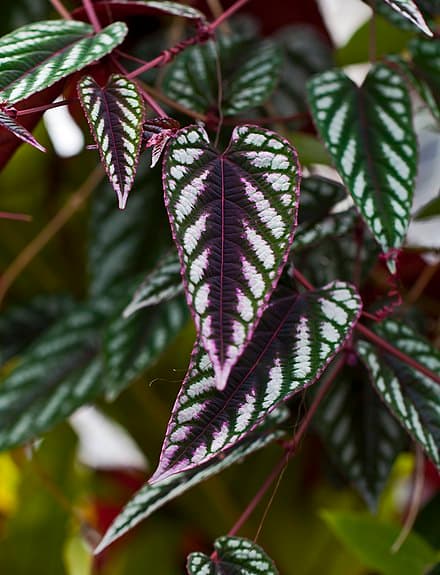
Cissus discolor
Cissus discolor is a tender evergreen climber with slender growth habits, typically reaching heights of 2.5 meters (8 feet) but only spreading about 30 cm (1 foot) wide. It features striking variegated leaves with patterns of silver, green, and purple, making it visually distinctive. The plant is valued for its ornamental foliage and climbing ability, often grown in hanging baskets or trained on supports. Young leaves are edible with a sour taste and can be consumed raw or cooked.
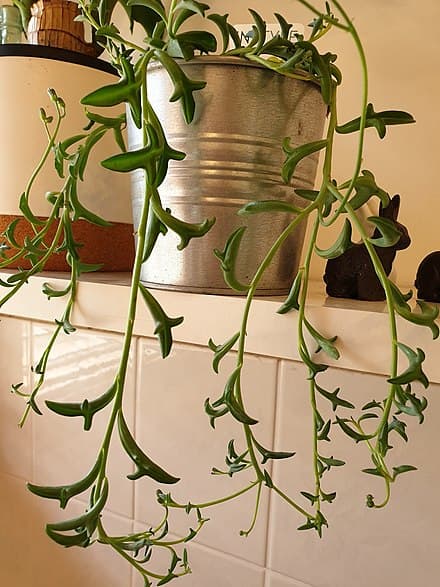
Curio × peregrinus
Curio × peregrinus is a distinctive succulent hybrid known for its unique dolphin-shaped leaves. Each curvy leaf develops two small points that resemble leaping dolphins, growing in trailing stems that cascade downward. The plant reaches 15 cm (6 inches) in height but can trail over 50 cm (20 inches) in length when mature. Its most notable features include rapid growth under ideal conditions and clusters of small white flowers with blood-red to golden-yellow filaments that bloom from May to June.
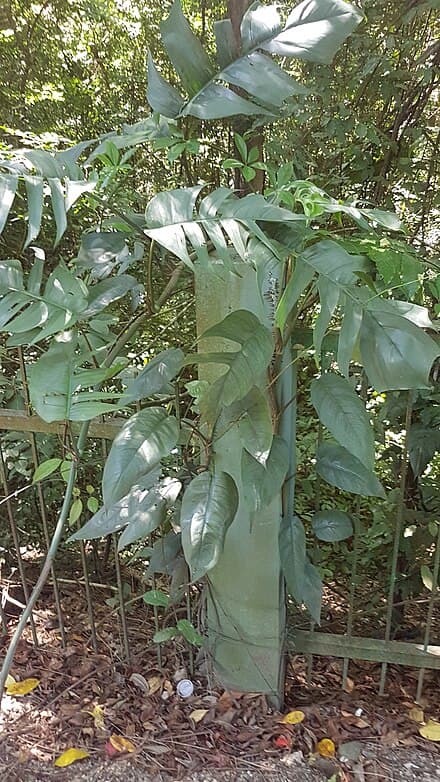
Epipremnum pinnatum
Epipremnum pinnatum is a climbing flowering plant that begins as a ground-dwelling species before transitioning to an epiphytic lifestyle by climbing trees. It exhibits foliage dimorphism, with juvenile leaves differing significantly from mature leaves in shape and size. The plant produces aerial roots along its stems and can develop large, fenestrated leaves when allowed to climb. Its vining growth habit makes it adaptable to both hanging baskets and vertical supports.
- LightBright, indirect light
- WaterRegular, when top inch is dry
- Common IssuesLeggy growth, leaf drop
Recommended For:
Getting Started with Trailing Plants
Trailing plants are characterized by their cascading growth habit, with vines that can trail or climb depending on how they're displayed. These versatile plants are perfect for hanging baskets, high shelves, wall planters, or trained on trellises and moss poles. Their flowing stems create visual interest and can soften architectural lines, adding dynamic movement to your indoor plant collection.

